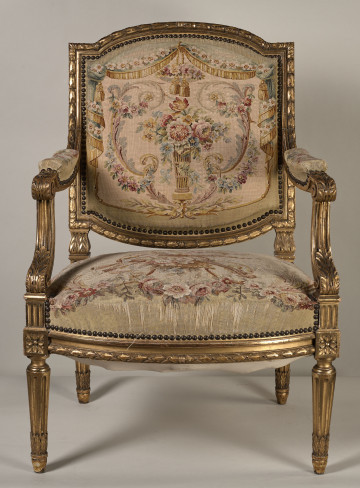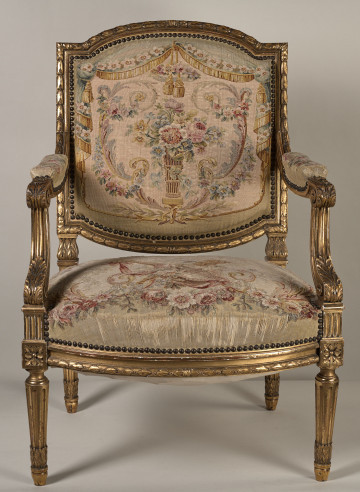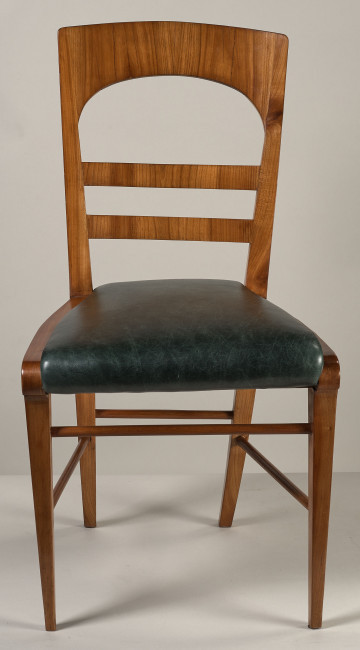
Armchair
19th (?) century
Castle Museum in Łańcut
Part of the collection: Furniture and interior furnishings
Corner cabinet. The angle cabinet was a new type of furniture that came into use in France in the mid-18th century and was widely applied in the European furniture making. Its popularity is evidenced by the large number of names used to describe a piece of furniture, such as: ‘corner-cupboard’, ‘corner cabinet’, Eckschrank in German, angoliera or cantonale in Italian. Corner cabinets, usually made in pairs and placed in the corners of one wall, were a symmetrical addition to the interior furnishings. Their forms varied from single-storey little chests of drawers with a single or pair of doors to cabinets with standing or hanging, open, glazed or built-in settings. The basic principle of their construction was the triangular layout. The invisible surfaces of the furniture adjacent to the walls were only boarded, while the visible face was finished in a decorative manner. In the Rococo period, the front wall of the corner cabinet was bulged or wave-shaped, decorated with veneer, marquetry, bronze fittings. This piece of furniture was often covered with a marble slab forming a top with a profiled edge at the front. The edge of the top repeated the plane of the front. The cabinet presented here was made by an unknown French cabinetmaker. The geometric marquetry motifs on the doors are typical for the late Rococo period. It reflects a chequered pattern of isosceles triangles tangent to the vertices, a pattern reminiscent of the traditional pointed diamond cut. This motif in marquetry was used by many French cabinetmakers, such as the well-known furniture designer and, from 1748, master craftsman, Adrien Delorme, as well as the lesser-known craftsman François Fleury. Teresa Bagińska-Żurawska https://orcid.org/0000-0002-9243-3967
Author / creator
Dimensions
height: 79 cm, width: 81 cm
Object type
Furniture and interior fittings
Technique
inlaying
Material
wood
Creation time / dating
Creation / finding place
Owner
Castle Museum in Łańcut
Identification number
Location / status

19th (?) century
Castle Museum in Łańcut

19th (?) century
Castle Museum in Łańcut

19th (?) century
Castle Museum in Łańcut
DISCOVER this TOPIC
Museum of King Jan III's Palace at Wilanów
DISCOVER this PATH
Educational path